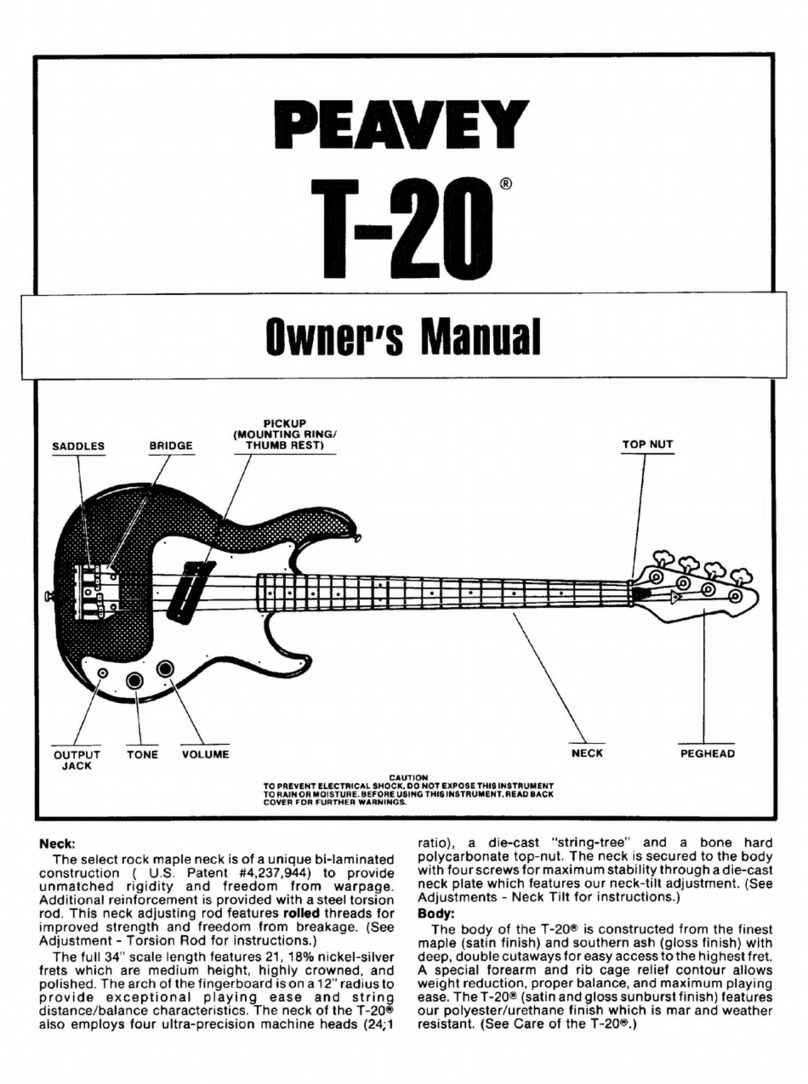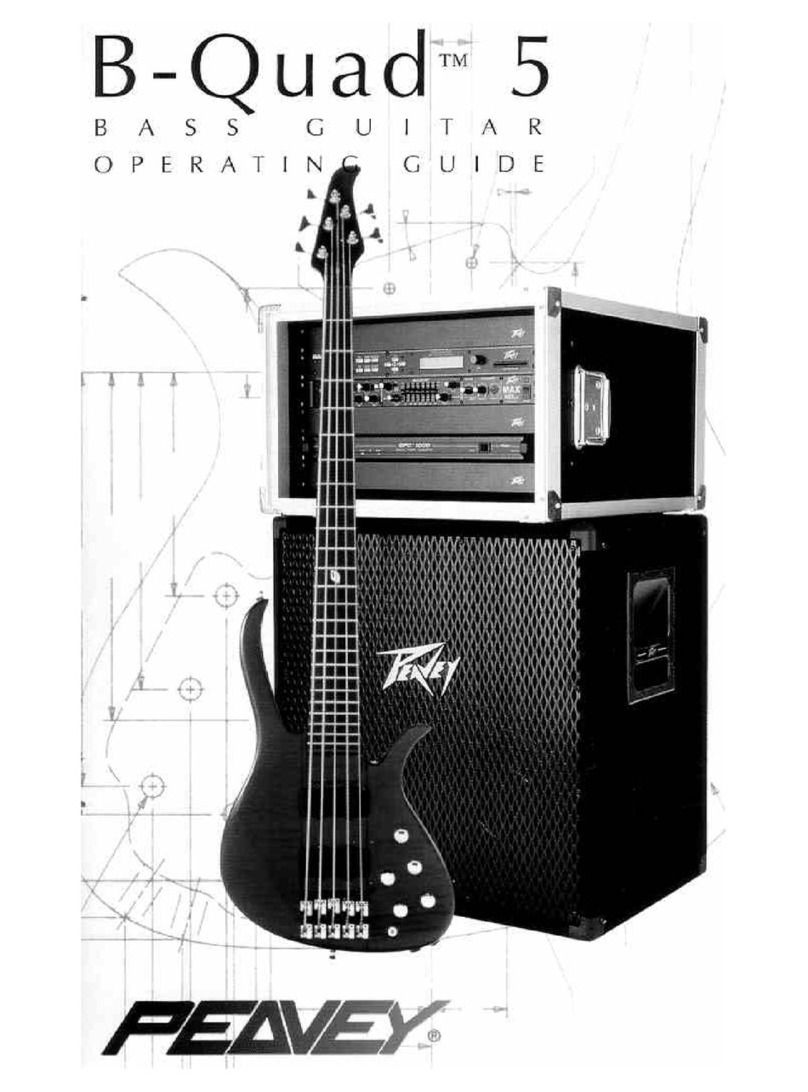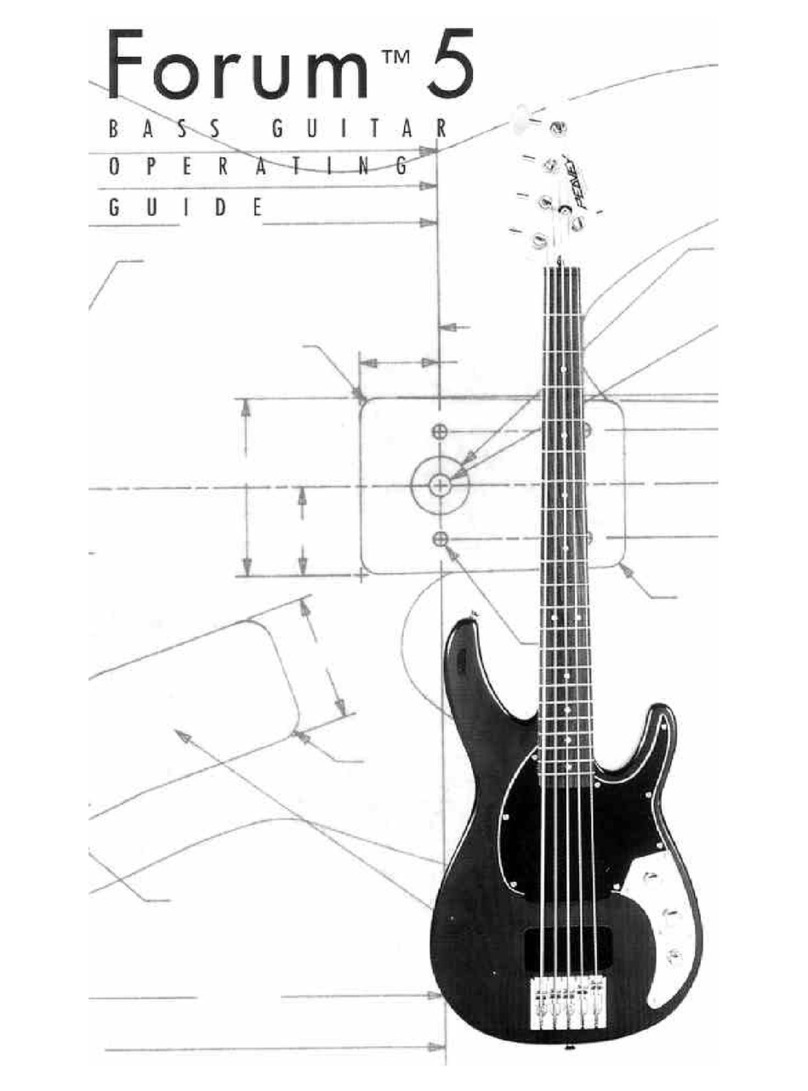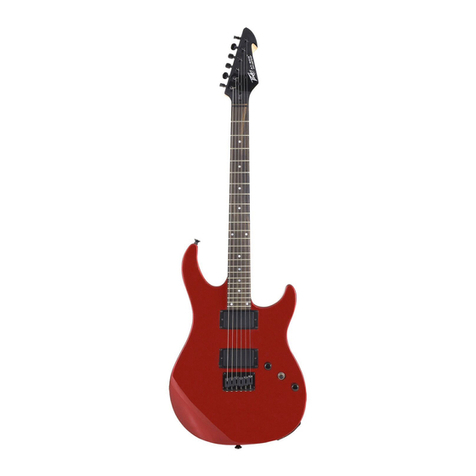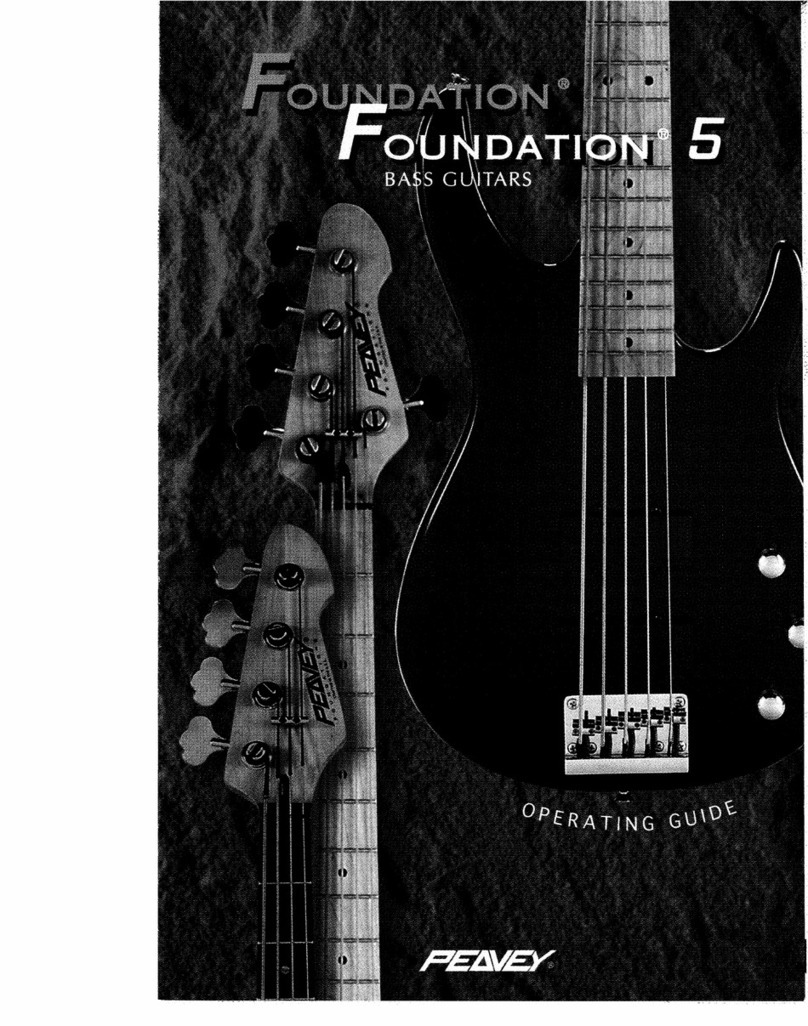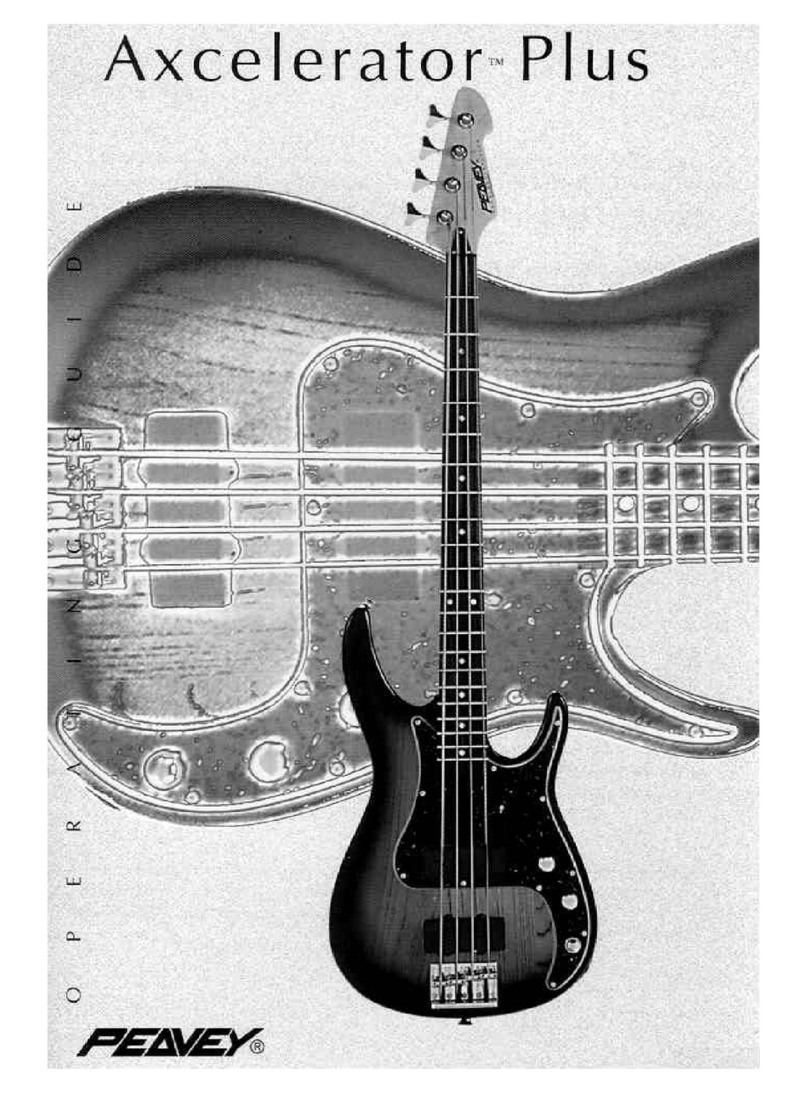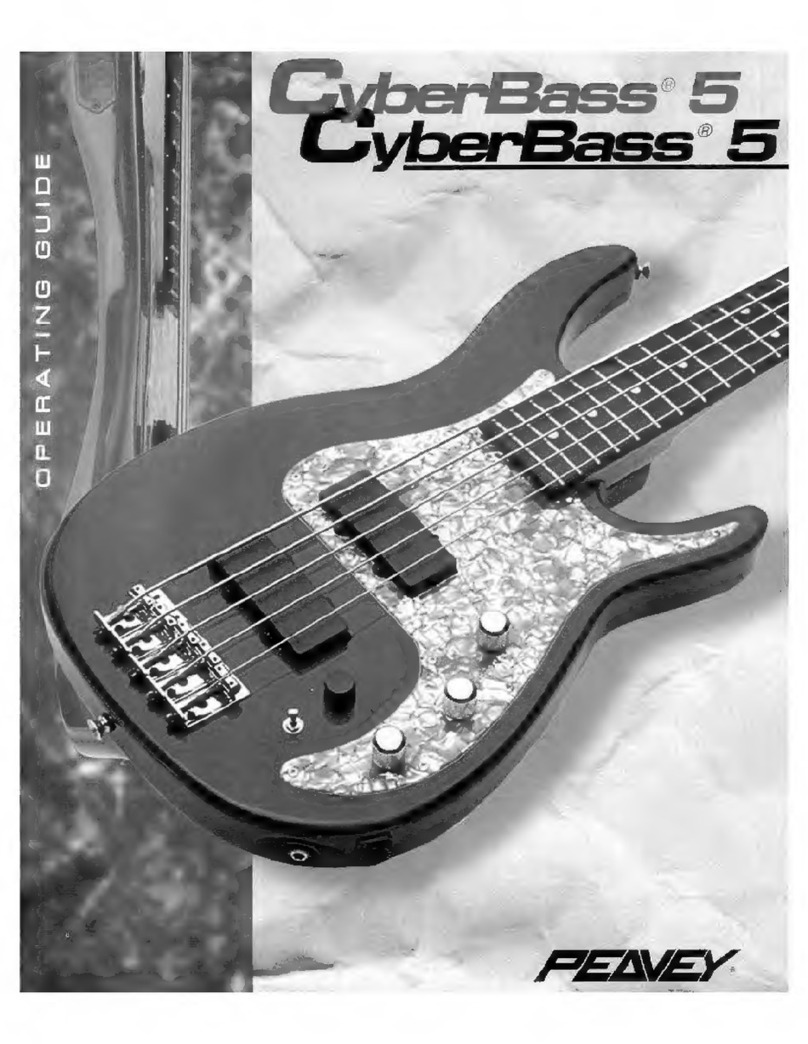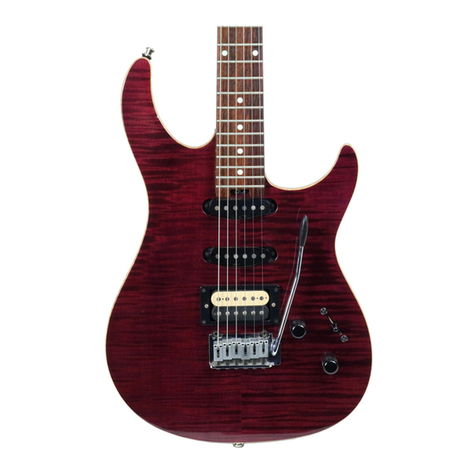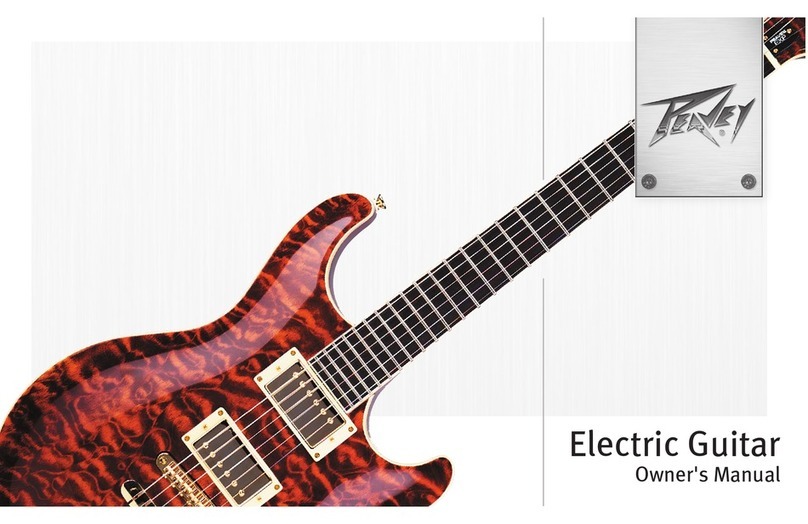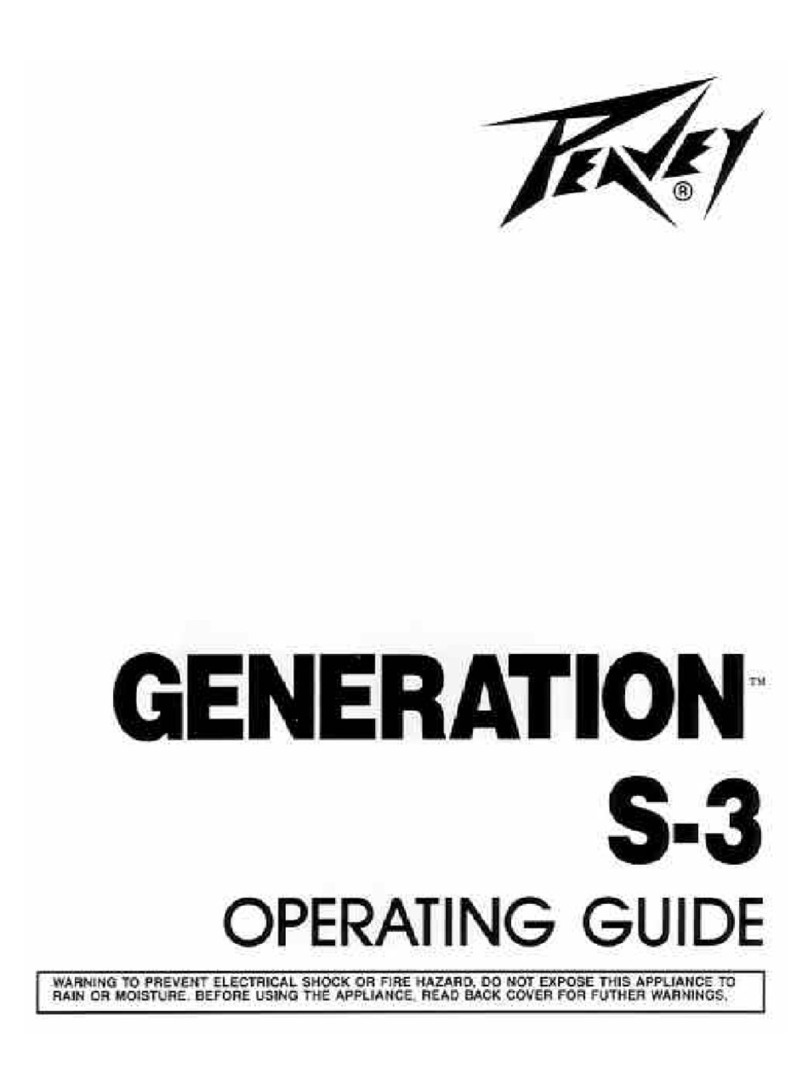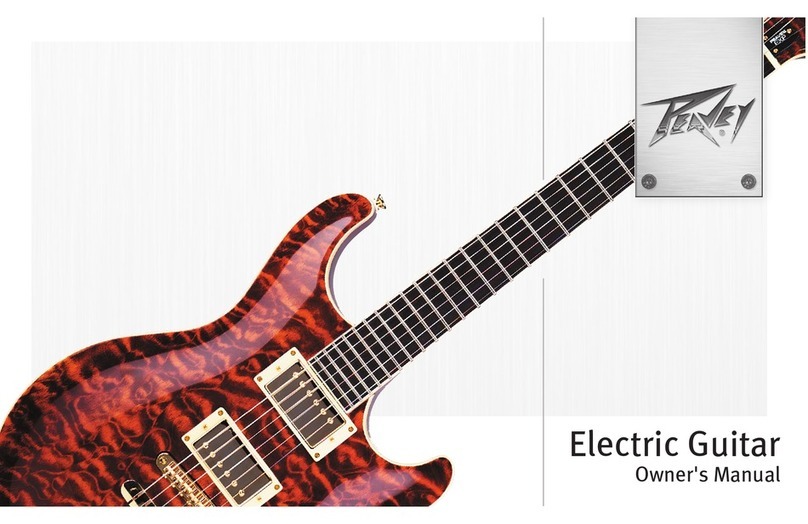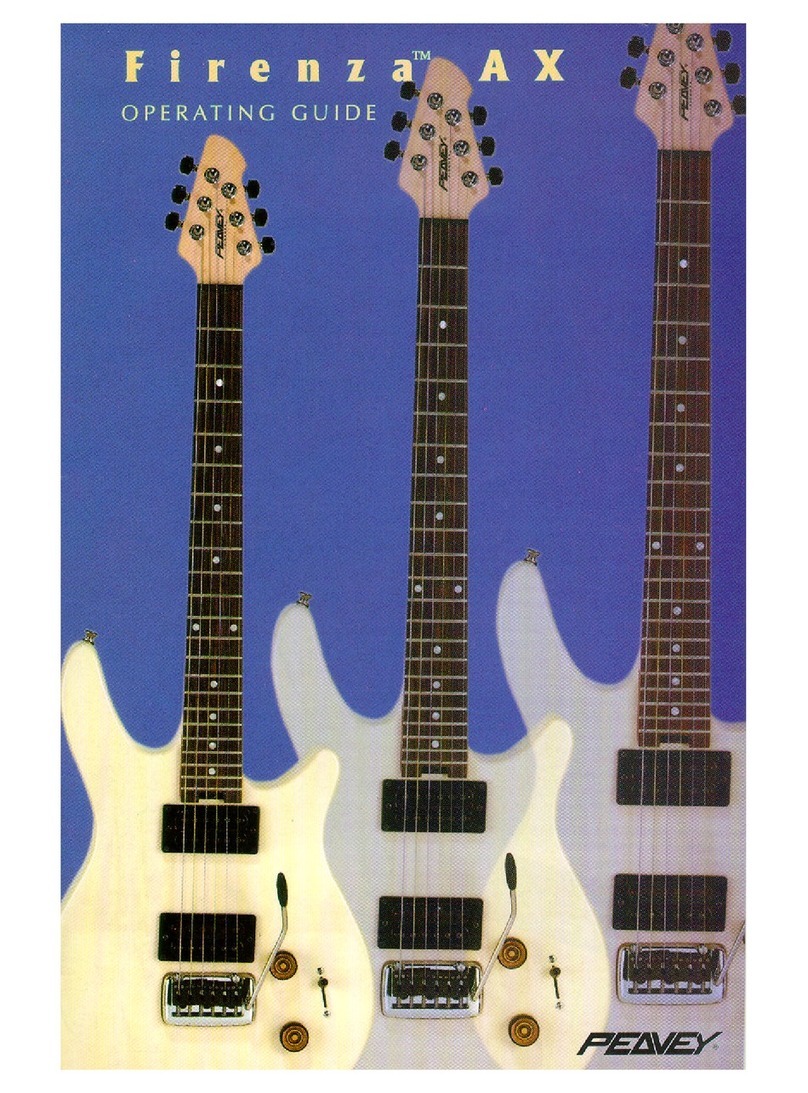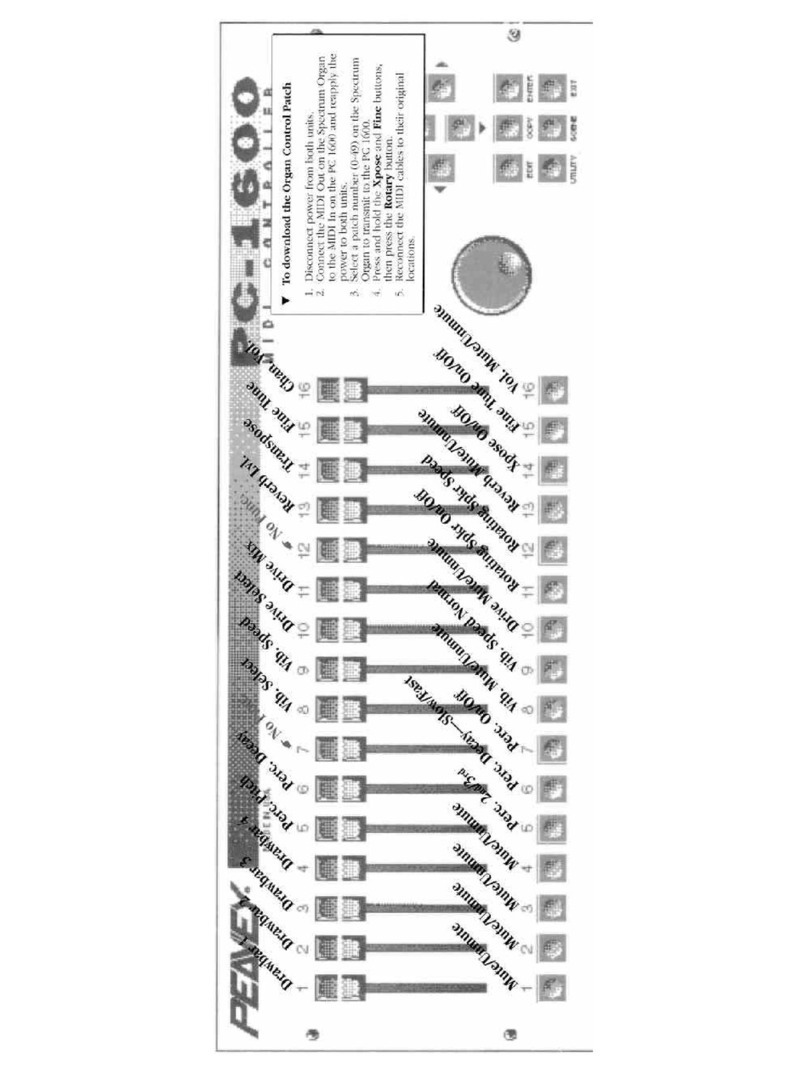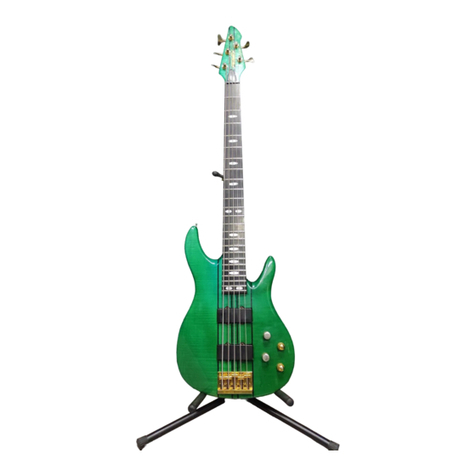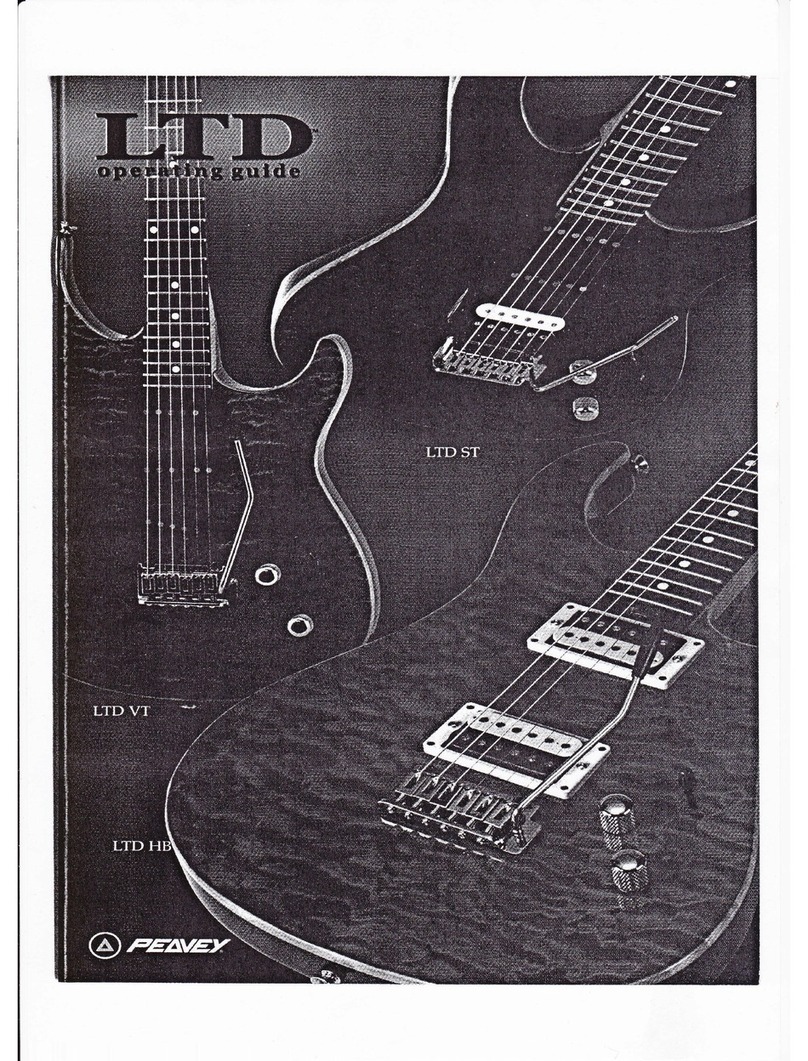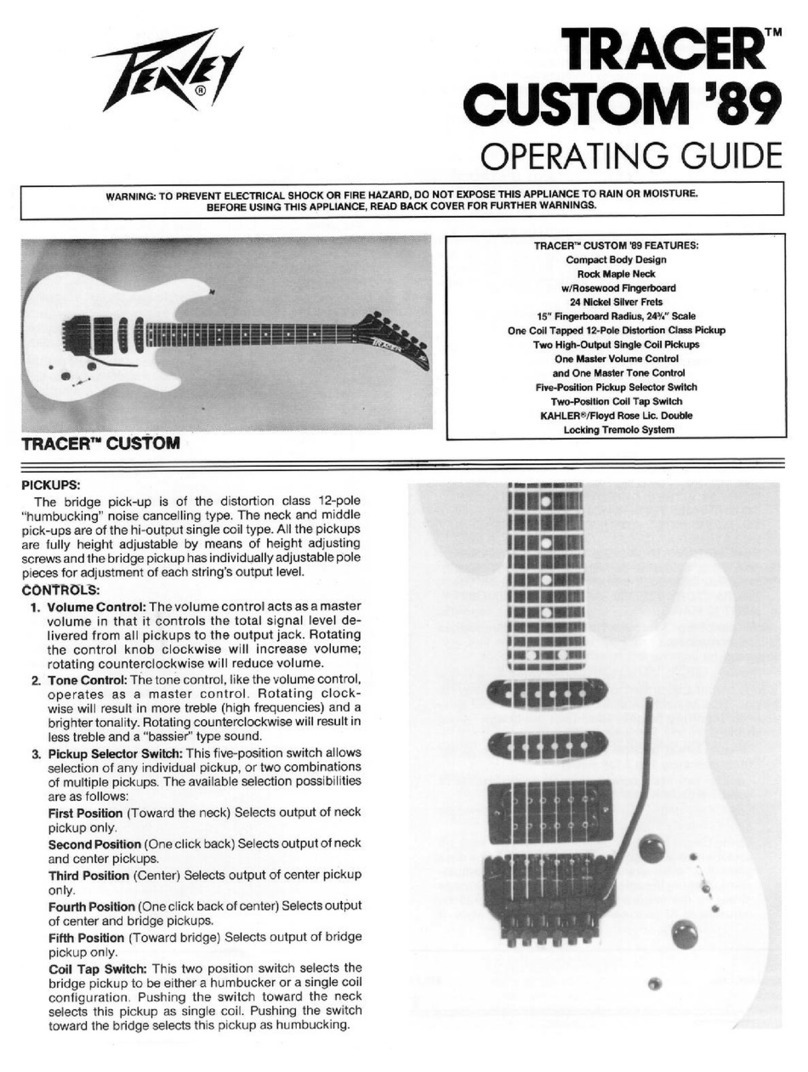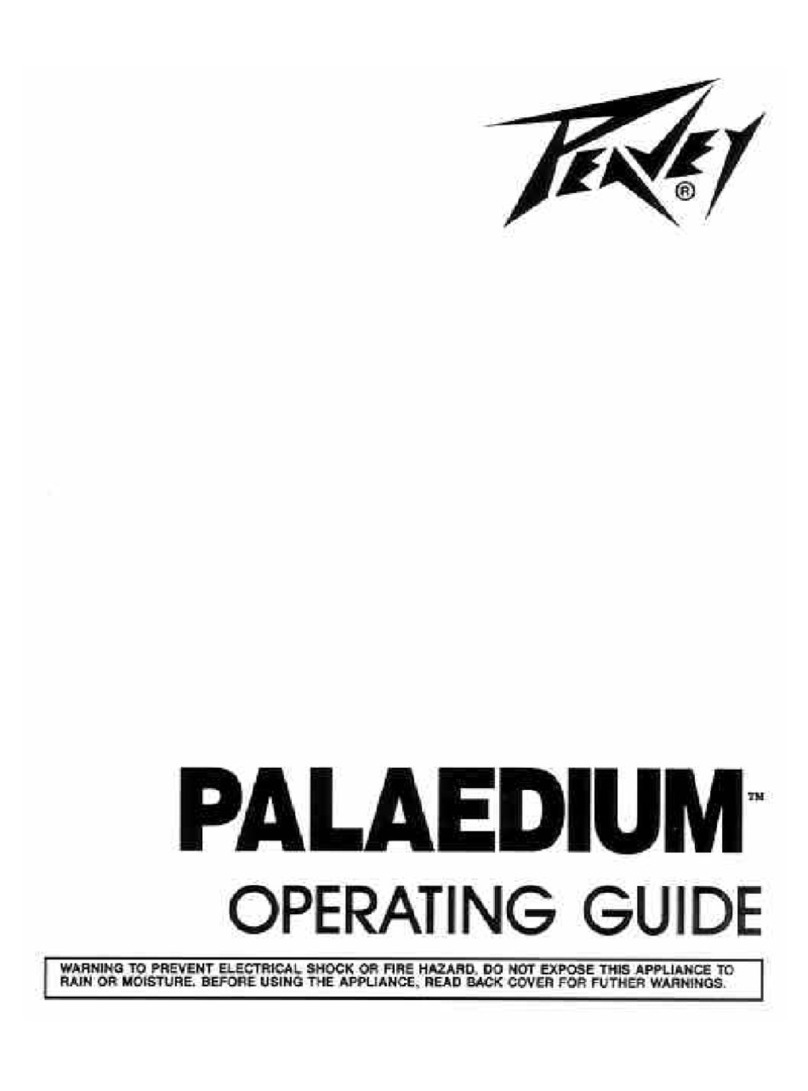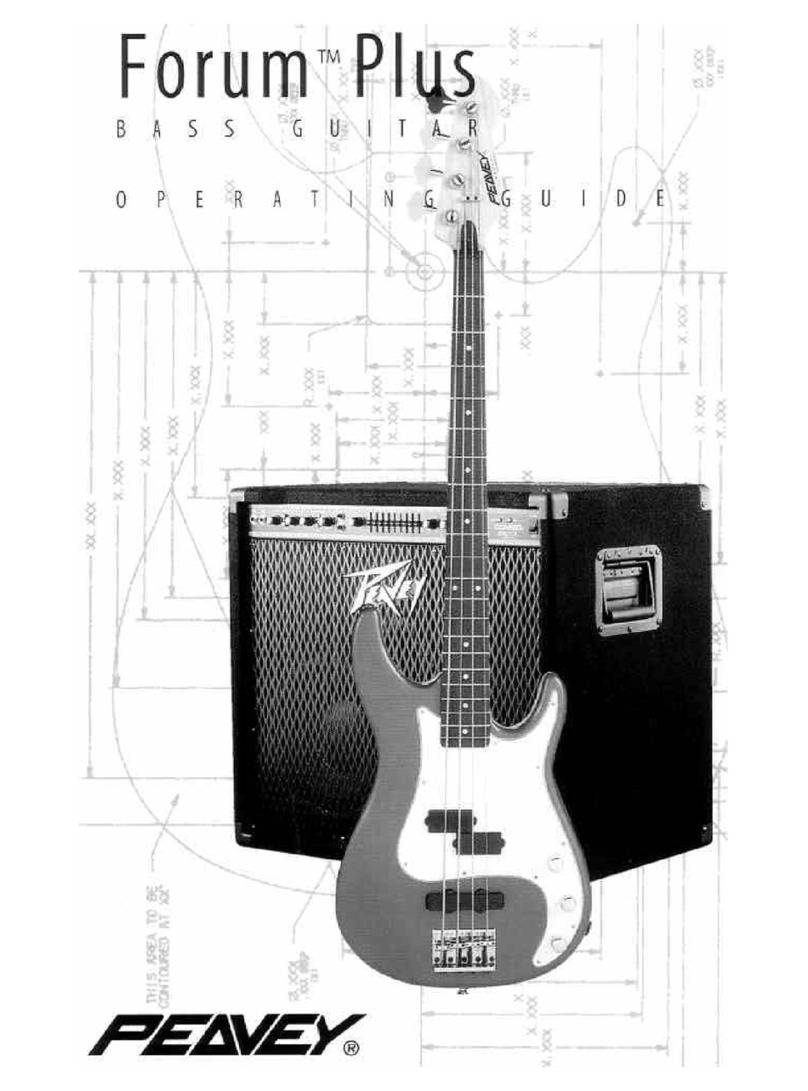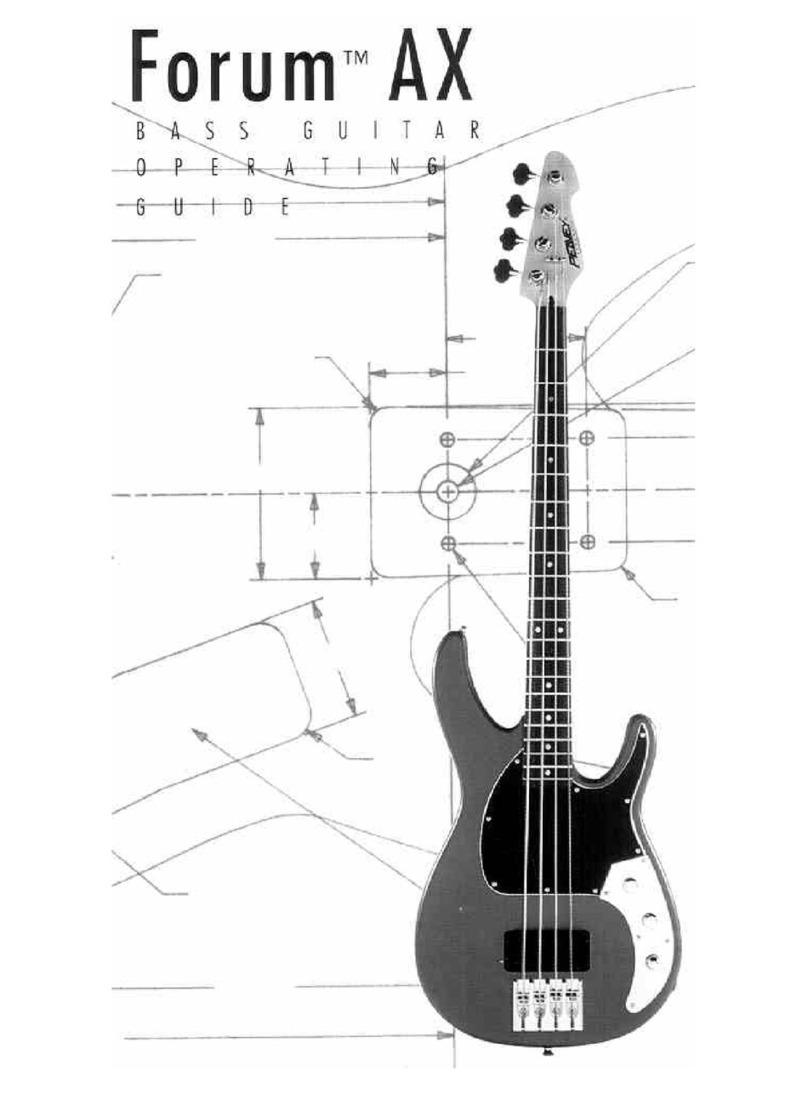
CAUTIONS:
DANGER
ALL
AMPLIFICATION
ACCESSORIES.MICRO-PHONES,
MIXERS,
ETC.,
MUST
BE
PROPERLY
GROUNDED
AND
SHOULD
BE
UTILIZED
WITH
A
3-WIRE
MAINS
SYSTEM
IN
ORDER
TO
AVOID
ELECTRICAL
SHOCK.
DANGER
DO
NOT
COME
INTO
CONTACT
WITH
OTHER
ELECTRICAL
APPARATUS
WHEN
PLAYING
(OR
TOUCHING)
YOUR
INSTRUMENT.
THE
METAL
PARTS
OF
THIS
INSTRUMENT
ARE
GROUNDED
ACCORDING
TO
PROPER
AND
ACCEPTED
INDUSTRY
PRACTICE,
BUTIT
IS
POSSIBLE
TO
ENCOUNTER
AN
ELECTRICAL
SHOCK
WHEN
COMING
INTO
CONTACT
WITH
ANOTHER
ELECTRICAL
APPARATUS
IF
IT
HAS
IMPROPER
GROUNDING
FACILITIES.
WARNING
DO
NOT
USE
IMPROPER
OR
POORLY
DESIGNED
GUITAR
STRAPS
OR
OTHER MEANS
OF
SUPPORT.
POSSIBLE
INJURY
COULD
RESULT
IF
IMPROPER,
INFERIOR,
ILL
FITTING
OR
WORN
OUT
STRAPS
ARE
USED.
THE
INSTRUMENT
COULD
POSSIBLY
FALL,
CAUSING
BODILY
INJURY
OR
DAMAGE
TO
THE
INSTRUMENT
OR
ASSOCIATED
EQUIPMENT
IF
THE
HOLDING
DEVICES
FAIL
FOR
ANY
REASON.
DANGER
GUITAR
STRINGS
ARE
MADE
FROM
VERY
STRONG
STEEL
ALLOYS.
THEY
ARE
DESIGNED
TO
BE
USED.
UNDER
TENSION
AND,
UNDER
CERTAIN
CONDITIONS.
THEY
MAY
BREAK
AND
SPRING
AWAY
FROM
THE
GUITAR.
DO
NOT
TUNE
OR
PLAY
THIS
INSTRUMENT
WITH
YOUR FACE
IN
CLOSE
PROXIMITY
TO
THE
STRINGS,
AS
SERIOUS
INJURY
COULD
RESULT
IF
A
STRING
SHOULD
BREAK.
PEAVEY
GUITAR
ONE-YEAR
LIMITED
WARRANTY/REMEDY
PEAVEY
ELECTRONICS
CORPORATION
(‘Peavey’)
warrants
this
Gutter
to
be
free
trom
defects
in
material
and
workmanship
‘era
period
of
one
year
from
date
of
purchase:
PROVIDED.
however,
thal
{hig
imited
watranty
is
extended
only
to
the
original
etal
purchaser
bra
le
subject
to
the
conditions,
exclusions
and
limitations
Nerainater
et
forth
CONDITIONS,
EXCLUSIONS
AND
LIMITATIONS
OF
LIMITED
WARRANTY
This
limited
warranty
shall
bo
VOID
and
of
NO
EFFECT
if:
T
rna
tist
purchase
othe
product
Is
for
tho
purpose
of
resale:
or
2.
The
original
retai!
purchase
is
not
made
fiom
ar
AUTHORIZED
PEAVEY
DEALER
or
Tre
product
has
veen
damaged
by
aceiJont
or
unreasonable
use,
neglect;
improper
service
or
maintenance,
or
tthe
auses
rot
arising
out
of
detects
in
material
or
workmanship.
This
limited
warranty
shall
not
oxtend
to
or
caver
guitar
strings
Replacement
of
guitar
strings
deemed
10
be
reasonable.
end
necessary
maintenance.
Purchaser's
axclusive
remedy
for
breach
of
this
limited
warranty
S
repare
of
the
detest
or
replacement
of
the
Guitar,
at
Posvey's
option,
titer
te
Gutar
is
returned,
postage
prepaid
and
insured.
along
wit
a
Geserption
of
tho
problem,
proof
of
purchase
and
a
complete
return
ageress
10
PEAVEY
ELECTRONICS
CORPORATION
THEA
Street
Meridian,
Mississippi
3901
Ir
the
getect
is
remedial
under
this
limited
warranty,
and
the
other
tormi
‘and
‘conchion®
expressed
herein
have
been
complied
with
Seavey
will
repair
or
replace
the
product
and
will
return
i,
freight
Steel,
Yo.
the
purchaser
Other
Inan
the
postage
and
insurance
‘quirement.
no
enarge
will
be
mace
for
such
repair
oF
replacement
Peavey’
liability
to
tho
purchaser
for
any
cost
whatsoever,
and
regarciess
ofthe
torm
of
action,
whether
In
contrast
orin
tort
Inctud
ng
foaligonee,
shall
be
limited
to
actual
damages
up
to
an
amaunt
equal
1
Mme
greater
af
tne
purcnese
price
of
ine
product
causing
Ine
damage
or
$30000
UNDER
NO
CIRCUMSTANCES
WiLL
PEAVEY
BE
LIAELE
FOR ANY
LOST
PROFITS,
ANY
INCIDENTAL
DAMAGES
OR
ANY
CONSEQUENTIAL
DAMAGES
ARISING
OUT
OF
THE
USE
OF
OR
INABILITY
TO
USE THe
GUITAR,
EVEN
IF
PEAVEY
HAS
SEEN
ADVISED
OF
THE
POSSIBILITY
OF
SUCH
DAMAGES.
The
foregoing
limitation
of
remedy
will
not
apply
to
the
payment
of
cost
and
damage
awards
for
personal
Injury
or
damage
‘0
real
property
Sr
Tangible
personal
property
caused
by
negligence
on
Peavoy's
part
THIS
LIMITED
WARRANTY
IS
IN
LIEU
OF
ANY
AND
ALL
WARRANTIES,
EXPRESS
OR
IMPLIED,
INCLUDING,
BUT
NOT
LIMITED
TO,
IMPLIED
WARRANTIES
OF
MERCHANTABILITY
AND
FITNESS
FOR
A
PARTICULAR
USE;
PROVIDED,
HOWEVER,
THAT
IF
THE
OTHER
TERMS
AND
CONDITIONS
NECESSARY
TO
THE
EXISTENCE
OF
THE
EXPRESS.
LIMITED
WARRANTY,
AS
HEREINABOVE
STATED,
HAVE BEEN
COMPLIED
WITH,
IMPLIED
WARRANTIES
ARE
NOT
DISCLAIMED
DURING
THE
ONE-YEAR
PERIOD
FROM
DATE
OF
PURCHASE
OF
THIS
GUITAR.
SOME
STATES
DO
NOT
ALLOW
LIMITATION
ON
HOW
LONG
AN
IMPLIED
WARRANTY
LASTS.
OR
THE
EXCLUSION
OR
LIMITATION
OF
INCIDENTAL
OR
CONSEQUENTIAL
DAMAGES,
SO
THE
ABOVE
LIMITATIONS
OR
EXCLUSIONS
MAY NOT
APPLY
TO
YOU.
THIS
WARRANTY
GIVES
YOU
SPECIFIC
LEGAL
RIGHTS,
AND
YOU MAY
ALSO
HAVE
OTHER
RIGHTS
WHICH
MAY
VARY
FRON
STATE
TO
STATE.
THIS
LIMITED
WARRANTY
IS
THE
ONLY
EXPRESS
WARRANTY
ON
THIS
GUITAR,
AND
NO
OTHER
STATEMENT
REPRESENTATION,
WARRANTY
OR
AGREEMENT
BY
ANY
PERSON
SHALL
BE
VALID
AS TO
OR
BINDING
UPON
PEAVEY.
THE
WARRANTY
REGISTRATION
CARD
AND
A
LEGIBLE
COPY
OF_THE
PROOF
OF
PURCHASE
SUPPLIED
TO
YOU
BY
THE
AUTHORIZED
PEAVEY
DEALER
IN
CONNECTION
WITH
YOUR
PURCHASE
FROM
HIM
OF
THIS
GUITAR
SHOULD
BE
ACCURATELY
COMPLETED,
MAILED
TO
AND
RECEIVED
BY
PEAVEY
WITHIN
FOURTEEN
(14)
DAYS
FROM
THE
DATE
OF
YOUR
PURCHASE
Should
notification
become
necessary
for
any
condition
that
would
require
correction,
the
registration
card
will
help
insure
that
you
are
contacted
and
properly
notified
l
you
move
from
the
address
shown
on
the
WARRANTY
REGISTRATION
GARD,
you
should
notify
Peavey
of
the
change
of
addre9s
so
as
to
facilitate
your
rece
pt
of
any
bulletins
or
other
forms
of
notification
which
may
become
necessary
in
connection
with
any
condition
that
may
require
dissemination
of
information
or
carraction.
The
WARRANTY
REGISTRATION
GAAD
and
subsequent
notices
of
change
of
address
should
be
mailed
to:
PEAVEY
ELECTRONICS
CORPORATION
P.O.
Box
2698
Meridian.
Mississippi
39301
In
the
event
any
modification
or
disclaimer
of
express
or
implied
warranties,
or
any
limitation
of
remedies,
contained
herein
conflicts
with
applicable
law,
then
such
modification,
disclaimer
or
limitation,
as
the
case
may
be,
shall
bedeemed
to be
modified
to
theextent
necessary
to
comply
with
such
law.
The
limited
warranty
is
given
by
Poavey
Electronics
Corporation
with
respect
to
equipment
purchased
in
the
United
States
of
America.
PEAVEY
ELECTRONICS
CORPORATION
/
711
A
Street
/
Meridian,
MS
39301,
U.S.A.
/
©
1962
/
Printed
in
U.S.A.
estos
ans
apociticstions
ited
